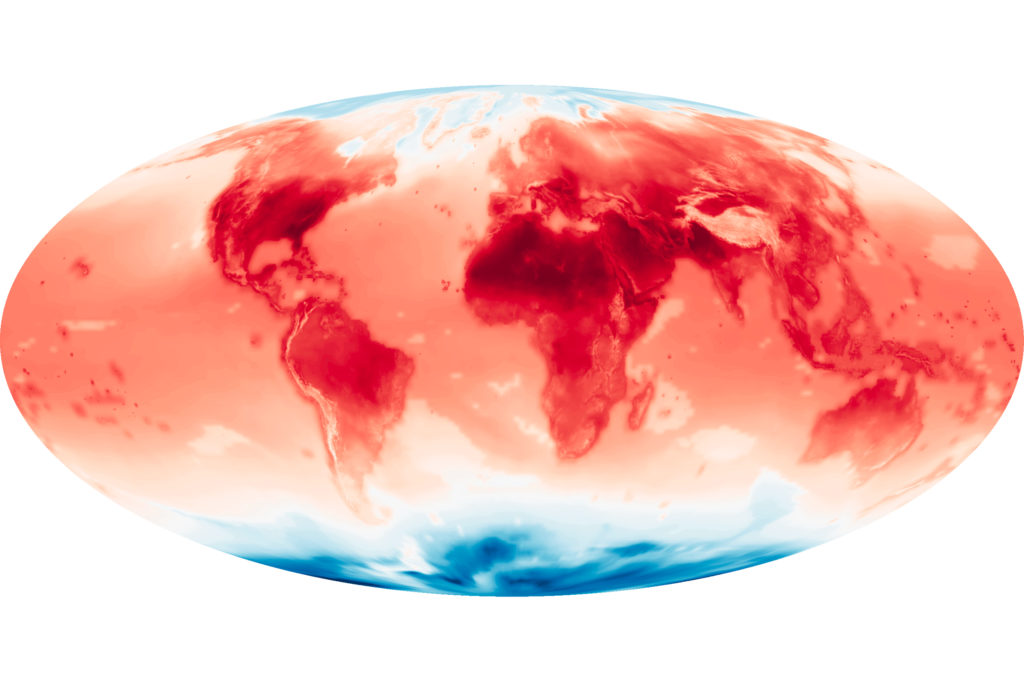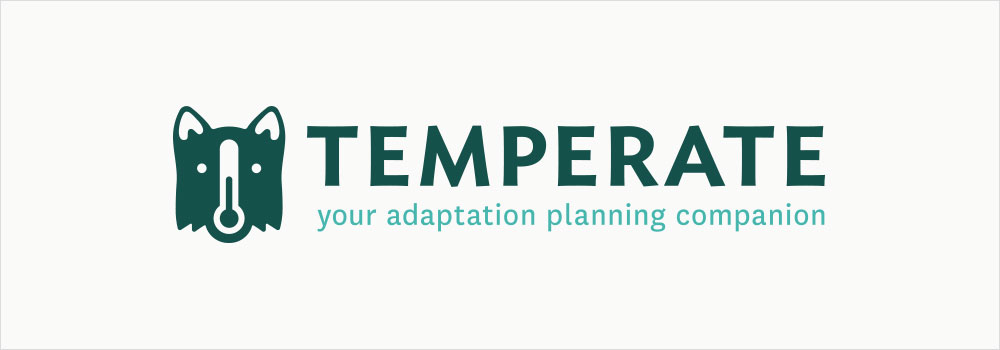Azavea first entered into the realm of climate change data in 2014, when we received a Small Business and Innovation Research (SBIR) Grant from the Department of Energy (DE‐SC0011303). As these were the days before the U.S. Climate Resilience Toolkit, giving decision-makers access to climate change indicator data was considered a top priority. To address this need, our goal was to develop an application programming interface (API) capable of returning climate data in real time (< 5 seconds) for arbitrary combinations of dataset, climate model, years of interest, and low or high emissions scenario for thousands of locations throughout the United States. In addition, we wanted to provide users with twenty-two derived temperature and precipitation climate indicators that would further assist their research. Some examples of these include Average Monthly High Temperature, Cooling Degree Days, Heat Wave Duration Index, and Yearly Dry Spells.

For source data, we used two of the most trusted datasets–the NASA Earth Exchange Global Daily Downscaled Projections (NEX-GDDP) (hosted on AWS) and Localized Constructed Analogs (LOCA). Both utilize a climate model output consisting of a number of files where each is a two-dimensional geospatial grid of temperature or precipitation data for a single climate model, variable, scenario and year (a format called NetCDF). In order to query for information at a single point on the globe, we would need to pull a single value out of every single file in the original NetCDF dataset. This was infeasible. Instead, we first built an API that is limited to retrieving data for city locations in our database. This allows us to ingest a subset of the source data into a PostgreSQL database on AWS RDS and query more efficiently for data at a particular location.
Since then, we’ve prototyped another solution that allows users to query arbitrary point and polygon geometries anywhere on the globe. This solution combines S3 HTTP Range queries with GeoTrellis (an Azavea-maintained open source library for distributed processing) to return results in real-time, depending only on a single pre-processing step that maps the NetCDF files to cloud-optimized GeoTIFFs stored in S3. A more detailed walkthrough of the concepts for the prototype can be found in this blog post. We’re currently exploring funding opportunities to swap the current Climate API implementation for this more flexible and robust one.
While we’ve forged ahead in our search for continuous improvements, at the conclusion of this first phase of work, we released our Climate API publicly. Our initial user outreach found that many of the decision makers that needed this information the most were not familiar with using an API. So, we created an intuitive user interface that allows users to explore the data more easily using just a web browser; we call it our Climate Lab. Yet whenever we spoke with local government employees, the answer was always the same: “This doesn’t help me make decisions” or “I’m already getting this information from the Climate Explorer.”
So we went back to the drawing board. Over the course of several months we conducted user interviews, built out wireframes, and tested new features. As it turns out, communities throughout the country — whether they have been directly affected by one or more of the increasingly frequent extreme events attributed in part to climate change, or because they are enacting their mandate to protect their citizens, assets, and culture — are searching for the most appropriate way to start along the climate resiliency path. To truly understand their needs, we partnered with ICLEI-USA, Local Governments for Sustainability. At the end of this process, and together with ICLEI-USA, we created Temperate, an intuitive climate adaptation planning tool designed specifically for small and mid-sized cities that can’t afford custom engagements. Temperate is a decision-support tool that allows communities to move beyond exploring charts and graphs and take steps toward vulnerability assessments and long-term adaptation planning at a very low cost (just $1,500/year). None of this process would have been possible had the data not been publicly available and subsequently powered by the Climate API, all of which relies on AWS.
Our first customers have been extremely pleased with our solution. One customer called Temperate a tool that “fit their needs exactly.” We’re happy to assist communities move past the reviewing and interpreting charts and graphs stage and into the real work of building custom adaptation plans for cities, all thanks to the availability of robust climate data hosted on AWS on S3. We’re currently working to expand into more regions (both domestically and abroad) and are excited about the opportunity to increase the capacity and lower the vulnerabilities of localities across the U.S.
Do you know someone who might benefit from this tool? Let’s chat. In the meantime, check out our free trial of Temperate, read our blog post about the Temperate release, and spread the word to those local decision makers in your network.

